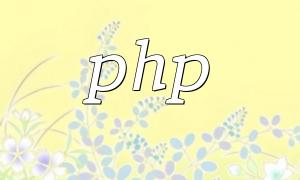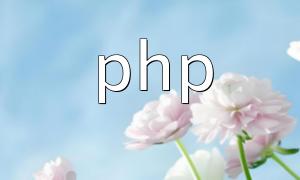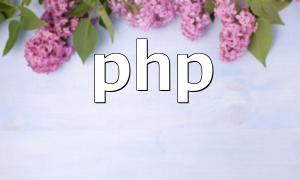In modern web development, PHP and JavaScript are two indispensable programming languages. Efficient array passing methods can significantly improve the interaction experience between them. This article will detail techniques for passing arrays between PHP and JS, helping developers optimize data exchange and application performance.
PHP is a server-side language, while JavaScript primarily runs on the client side. Although their execution environments differ, appropriate techniques can achieve seamless data transmission. Arrays are commonly used data structures on both ends, so mastering correct passing methods is crucial.
JSON (JavaScript Object Notation) is a widely adopted standard format for passing arrays between PHP and JavaScript. It features a simple structure that is easy to read and process. PHP's built-in functions support array-to-JSON conversion, and JavaScript can easily parse this format.
Using PHP's json_encode() function, arrays can be quickly converted to JSON format. Here's an example:
$array = array("name" => "Alice", "age" => 30, "city" => "New York");
$json = json_encode($array);
echo $json; // Output: {"name":"Alice","age":30,"city":"New York"}JavaScript uses JSON.parse() to convert JSON strings into objects for further manipulation. For example:
const jsonString = '{"name":"Alice","age":30,"city":"New York"}';
const obj = JSON.parse(jsonString);
console.log(obj.name); // Output: AliceAjax technology allows asynchronous data exchange without refreshing the page, improving user experience. Below is a simple jQuery-based Ajax example:
$.ajax({
url: 'your_php_script.php',
type: 'POST',
data: { key: 'value' },
dataType: 'json',
success: function(response) {
console.log(response);
}
});When passing arrays between PHP and JS, the following points are essential:
Ensure data format correctness to avoid parsing errors;
Prioritize security to prevent cross-site scripting (XSS) attacks by properly filtering and converting data;
Focus on transmission efficiency by minimizing data size to enhance loading speed and user experience.
Mastering the techniques for passing arrays between PHP and JavaScript can greatly enhance web interaction performance. By effectively using JSON format and Ajax technology, developers can achieve efficient and secure data exchange. Hopefully, this article provides practical guidance for your web development projects, making your applications perform better.









